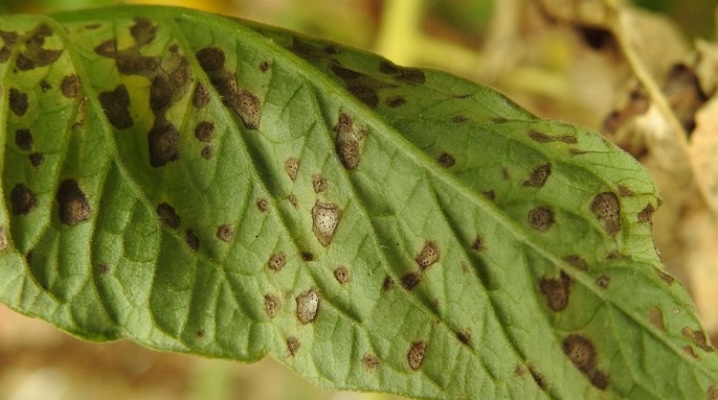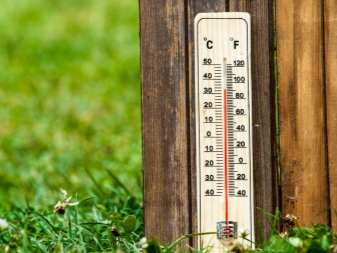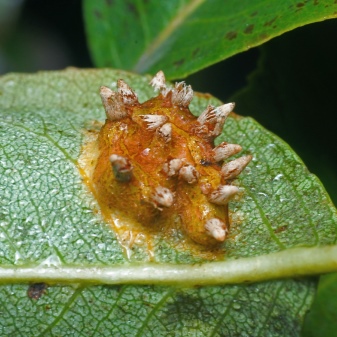All about plant diseases

Plant diseases are understood as processes that occur in these crops under the influence of various kinds of reasons, among which there may be pathogens and unfavorable conditions of the external world, as well as a violation in the functional activity of the plant organism. To date, a huge number of diseases are distinguished that can have a negative effect not only on the vital activity of a plant, but also cause its premature death.


Overview of noncommunicable diseases
Non-communicable diseases can also cause metabolic disorders due to the negative effects of the environment or some microorganisms. Exactly due to non-infectious diseases, photosynthesis, protein metabolism and other vital processes for the plant are often disrupted.
The peculiarities of non-communicable diseases are that they manifest themselves due to the influence of unfavorable external conditions, which causes significant changes in the life of the plant.
Among the distinctive features of infectious diseases are the following.
- The absence of pathogens that cause problems with the vital activity of the plant.
- Such diseases cannot be transmitted from one plant to another.
- The plant can be cured only due to the fact that the external factor that leads to the disease is excluded.
- Noncommunicable diseases usually appear due to a lack or excess of nutrients, as well as exposure to high or low temperatures.
In addition, one of the reasons for the manifestation of non-communicable diseases in the modern world is severe pollution of the external environment, which plays a fairly large role for plants. That's why it is recommended to give due importance to watering and providing the plant with nutrients, which is the main cause of disease.
In addition, this can include the negative effects of ionizing radiation, as well as toxins that are released into the soil by certain types of fungal plants.


Infectious diseases
Plants such as parsley, Manchu walnut, garden fern, chestnut, blueberry, lemongrass, and others are susceptible to infectious diseases, making them vulnerable and can be disabling. To date, a huge number of infectious diseases are distinguished, each of which has its own origin, features of the course and treatment.
Mushroom
Fungal plant diseases are among the most common. The main reason for their appearance is phytopathogenic fungi, which are also called parasites.... This type of disease is extremely harmful, since it can greatly affect the harvest and reduce the quality of products in a short period of time.
It is because of special pathogens that pathological processes appear that negatively affect the structure and physiological functions of the plant, and can also lead to a complete cessation of its vital activity, which occurs due to problems with breathing, enzymatic activity, and so on. The peculiarity of fungal diseases is that they can be transmitted both by seeds and roots., which greatly complicates the process of protection and prevention. The infection is so severe that it can persist even in residues that formed after harvest, as well as in the soil itself.
In addition, pathogens are often carried by wind or rain, affecting the entire crop.

Bacterial
Bacterial plant diseases that also called bacteriophages, is a major problem in many crops, including tobacco, cabbage, cucumber and others. It should be noted that problems can be both general, which cause the death of one plant species, and local, which affect only certain organs. As for pathogens, this is a huge number of families of bacteria, including can be polyphagous, as well as specialized.
Polyphagous variants are more destructive, since they are capable of destroying whole crops of potatoes, onions, tomatoes and other crops. As for specialized bacteria, they usually cause mottling on beans, cucumbers and other crops, including citrus fruits. In order for bacterial diseases to appear, an infectious principle is necessary, which can be created due to non-observance of temperature, humidity level or other nuances.

Viral
This type of plant disease is caused by viruses that can infect almost any family of flowering, conifers, and fungi. It is viral diseases that very often cause the destruction of crops and a drop in their quality. This type of disease can be divided into mosaics and jaundice.... The main symptom of mosaics is the uneven color of the leaves, which is caused by problems in the apparatus of the cells of their leaves. The maximum harmfulness of this disease is for tobacco, tomato and potato.
As for jaundice, it can be a major problem with potatoes, citrus fruits and mushrooms. The only way to combat such diseases is to use immune varieties that are able to resist viruses.
In addition, special pesticides can be used to ensure the safety of crops.


Mycoplasma
Such diseases are caused by special herbivorous organisms that can be observed not only in agricultural, but also in wild crops. Very often, these diseases can be found in basil, sea buckthorn, chamomile, melons and even hops. They are also dangerous for lettuce, bladderwort and other similar crops.
One of the most effective ways to get sick with such diseases is the improvement of planting and seed material, as well as the introduction of potash fertilizers into the soil., which, with the help of special microelements, help to resist mycoplasma pests.


Symptom classification
The study of symptoms is extremely important in the process of determining the type of disease and the selection of subsequent treatment.
To date, the following are the most common symptoms of plant disease.
- Rot... Almost any serious plant disease causes rot. At the same time, not only certain parts of the plant can rot, but all of it. And in rare cases, even plant organs, which are rich in water and nutrients, are attacked.
- Necrosis... It represents the death of tissues, which can occur due to the pathogen, as well as due to the protective reaction of plants to the appearance of this pathogen.
- Ulcers... They appear when there are problems with parts of plants that are provided with water. In addition, ulcers sometimes result from tissue softening that occurs under the influence of an external pathogen.
- Mosaics... They are the reason for the violation of the integrity of the leaves, their yellowing or complete withering away.The main reason is the presence of viruses.
- Plant deformation, which can be caused by any kind of disease. If this symptom is observed, then it is necessary to conduct additional research on the plants in order to detect the causative agent of the problem.
- Tumors and growths... They can be the cause of a bacterial infection, as well as appear due to improper care of plants, if the temperature or humidity level is not observed, which leads to the appearance of viral pathogens.


The best drugs for treatment
After identifying the disease, it is necessary to immediately start treating it so that it cannot infect other plants and destroy entire crops. When choosing the most effective remedy, one must be guided not only by its safety for the plant, but also for human health, which is especially important if the culture will be used by it.
To date, several funds are allocated to combat pathogens and plant diseases, which differ in their composition.
- Inorganicwhich are distinguished by the presence of fluorine, calcium or arsenic. This connection is quite safe if the instructions are followed carefully and used within the permissible limits.
- Organic, which are allowed to be used in the presence of certain bacterial diseases. They are absolutely safe for humans and the environment.
- Biogenic, in the production process of which bacteria and fungi are used, therefore, they should be used only in special cases and with utmost care.
Today, in the process of searching and selecting the optimal plant protection against many diseases, it is customary to use the classification of pesticides, which looks like this.
- Insecticides, which are necessary for the fight against insects, as well as the destruction of their larvae.
- Acaricides... They are designed to protect plants from the negative effects of mites.
- Antibiotics... As with the human body, antibiotics are designed to fight bacteria.
- Fungicides, which show themselves well in the fight against fungal spores.
- Herbicidesthat belong to weed control products.
- Nematicides, with which you can treat plants from nematodes.


It should be noted that chemical means of protection are more effective in comparison with organic, since they act purposefully and are capable of destroying any harmful bacteria, viruses or microorganisms in a short period of time. The peculiarity of these drugs is that they can be produced in various consistencies, which allows you to choose the best option for any case.
Depending on which particular agent was chosen, it is necessary to prepare the correct mechanism or device for pollination, spraying, and so on. It should be noted that each manufacturer offers clear instructions and recommendations for the use of the drug, which must be followed in order to ensure the safety of the plant and the effectiveness of the drug. The domestic market offers a huge number of drugs that are in no way inferior to foreign counterparts. Among them it is possible to highlight Benomil, Agrotsit, Divergent, Carboxil and others. These are strong enough fungicides and antibacterial drugs that can ensure plant safety and protect agricultural and other crops from many pests..
It should be noted that, in terms of quality, domestic drugs are practically in no way inferior to foreign counterparts, and in some cases even surpass them. A in the process of choosing pesticides, it is necessary to give preference to the products of the company that uses exclusively high-quality raw materials in the production process... Only such funds are able to provide an active fight against pathogenic infections.Thus, today, a huge number of plant diseases stand out, which differ in their origin, course and treatment characteristics. In order to provide an effective cure for diseases, it is necessary to pay close attention to determining the type, and then choose a method of treatment. The use of special prophylactic agents will provide an increase in yield due to the protection of plants from fungal diseases.
In addition, in the selection process, attention must be paid to the safety of a particular drug for human and animal health. Only the use of the correct seedlings, biofungicide, and a whole list of proven antibiotics will make home treatment effective.


For information on how to protect plants from disease, see the next video.













The comment was sent successfully.